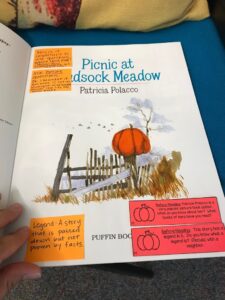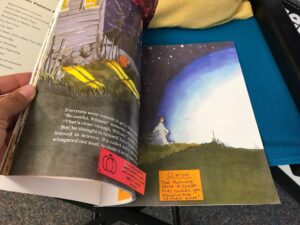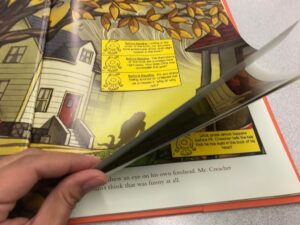Be warned … there is nothing original in this idea. But maybe this post can inspire you to take a closer look at prepping your read-alouds.
Teachers have been annotating their read-alouds since the beginning of time. I had gotten away from it, assuming that “thinking on the fly” would suffice for me. After all, I use read-alouds in my lessons every day, and I know when to pause and what questions to ask. Right? Wrong. We all do it. There are days we go on autopilot. There are even days we get so wrapped up in the story we’re reading that we forget to pause for discussion at all the crucial points.
I don’t think it’s a secret that I use Rooted in Reading in my classroom. I used it in second grade, and it was the first thing I bought when I found out I’d be moving to third grade. Many of the weekly texts are new to me, and I often found myself forgetting to pause at certain points in the book to mention literary devices, or to model comprehension strategies. So I took the read-aloud cards that come with each set of lessons, cut them up and taped them into my books. Then I went through and added my own Post-Its with additional notes from the book. This has been a life saver for me. It takes some time to go through a new book and decide where you want to pause for discussion, but I’m so glad I’ve done this. My students are getting so much more out of the texts now.
So there it is … a very obvious, un-original piece of advice. Though even in saying that, I will tell you that most my colleagues have gotten away from this practice as well. Take the time to annotate your read-alouds and it will force you to pause for discussion and deepen your students’ understanding of the text.





